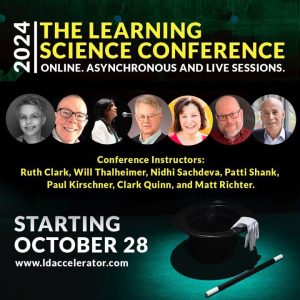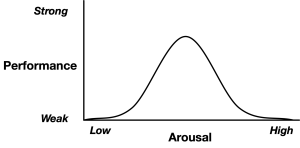 I believe, quite strongly, that the most important foundation anyone in L&D can have is understanding how learning really works. If you’re going to intervene to improve people’s ability to perform, you ought to know how learning actually happens! Which is why we’ve created the Learning Science Conference 2024.
I believe, quite strongly, that the most important foundation anyone in L&D can have is understanding how learning really works. If you’re going to intervene to improve people’s ability to perform, you ought to know how learning actually happens! Which is why we’ve created the Learning Science Conference 2024.
We have some of the most respected translators of learning science research to practice. Presenters are Ruth Clark, Paul Kirschner, Will Thalheimer, Patti Shank, Nidhi Sachdeva, as well as Matt Richter and myself. They’ll be providing a curated curriculum of sessions. These are admittedly some of our advisors to the Learning Development Accelerator, but that’s because they’ve reliably demonstrated the ability to do the research, and then to communicate the results of theirs and others’ work in terms of the implications for practice. They know what’s right and real, and make that clear.
The conference is a hybrid model; we present the necessary concepts asynchronously, starting later this month. Then from 11- 15 November, we’ll have live online sessions led by the presenters. These are at two different times to accommodate as much of the globe as we can! In these live sessions we’ll discuss the implications and workshop issues raised by attendees. We will record the sessions in case you can’t make it. I’ll note, however, that participating is a chance to get your particular questions answered! Of course, we’ll have discussion forums too.
We’ve worked hard to make this the most valuable grounding you can get, as we’ve deliberately chosen the topics that we think everyone needs to comprehend. I suggest there’s something there for everyone, regardless of level. We’re covering the research and implications around the foundations of learning, practices for design and evaluation, issues of emotion and motivation, barriers and myths, even informal and social learning. It’s the content you need to do right by your stakeholders.
Our intent is that you’ll leave equipped to be the evidence-based L&D practitioner our industry needs. I hope you’ll take advantage of this opportunity, and hope to see you at the Learning Science Conference 2024.



